Rakkojae, l'expérience de la culture coréenne (락고재)
1.6Km 2019-02-12
49-23, Gyedong-gil, Jongno-gu, Seoul-si
Si vous désirez vraiment connaître la Corée, vous devez connaître le mot "pungnyu".
Pungnyu, est un idéal qui a été transmis à la culture coréenne depuis la création de la nation et qui signifie l’harmonie entre l’homme, la nature et la poèsie.
Rakgojae est un centre culturel qui a récemment ouvert au Village Hanok Bukchon à Séoul et qui permet aux visiteurs de découvrir l’idéal coréen pungnyu.
Le centre offre des démonstrations de musique, de danse et d’arts traditionnels coréens, transmettant la culture pungnyu.
Buckchon est un endroit qui a été préservé pour sauvegarder des informations sur le style de vie des gens de l’époque de Joseon. Le village est très apprécié des visiteurs étrangers qui espèrent ainsi découvrir un aspect plus traditionnel du pays. Situé au centre de Bukchon, Rakgojae accueille les visiteurs étrangers. Il leur offre la possibilité de louer une maison pouvant héberger jusqu’à 9 personnes. Un repas coréen typique sera servi aux invités.
De chaque côté du village, se trouvent des grands palais : le Palais Gyeongbokgung, le Palais Changgyeonggung et le Palais Changdeokgung. Les visites peuvent se poursuivre par Jongmyo, le sanctuaire ancestral royal qui abrite les tablettes des souverains de Joseon et de leurs reines. Les visiteurs de Rakgoje peuvent en profiter pour visiter les sites touristiques à proximité et ainsi plonger dans les vies des aristocrates du passé.
Musée mondial de la joaillerie (세계장신구박물관)
1.6Km 2023-09-25
2, Bukchon-ro 5na-gil, Jongno-gu, Seoul-si
+82-2-730-1610
Le musée mondial de la joaillerie se situe dans une ruelle du quartier Samcheong-dong, à l’est du palais Gyeongbokgung, où sont regroupés de nombreux musées et galeries d’art.
Le directeur du musée a collectionné environ 3 000 pièces dans une soixantaine de pays pendant 30 ans, et il en a exposé environ mille ici.Le rez-de-chaussée se compose d’un mur d’ambre reflétant les 5 000 ans de l’histoire de la Terre, de la Chambre Eldorado revêtue d’or qui a fasciné les européens du XVIème siècle, de la salle des colliers mettant en valeur les techniques somptueuses, de la salle du crucifix qui crée une atmosphère paisible et calme.
Au premier étage se trouvent le mur de bagues et celui de masques qui vous inviteront à la méditation, la salle d’ivoire et de perles agencée de manière à découvrir la beauté de l’art de la décoration intérieure, et la salle dédiée aux parures modernes.
The Place Seoul (traditional Korean-style guesthouse) [Korea Quality] / 멀티스페이스 곳 [한국관광 품질인증]
1.6Km 2019-12-05
52-11, Gyedong-gil, Jongno-gu, Seoul
+82-10-3255-1289
“The Place Seoul” is located in a small alley in Gyedong-gil, Jongno-gu, Seoul. It is a guesthouse made by remodeling an 80-year-old traditional Korean house. The ondol room furnished with traditional beddings is popular not only among foreigners but also among Koreans due to its special ambience. The ceiling of the room dates back to 80 years ago. The rafter put on the roof at the time of construction of the house shows the antiqueness of the house. The toenmaru (a narrow wooden porch running along the outside of a room) that comes alive with the frequent coming and going of people adds to the ambience of the traditional Korean house, with the Sansuyu (corni) tree and vegetable garden beside the Korean-style house creating a leisurely atmosphere.
Beyond being a mere place to sleep in, “The Place Seoul” aims to be a composite cultural space whose motto is “the place to fill.” A simple wedding or a small-scale performance is held in the garden during the day. The rooms can be rented for small meetings.
“The Place Seoul” sponsors “WWOOF KOREA,” an NGO promoting environment-friendly agriculture as well as the right dietary life, “Slow Food Korea,” and “Slow Box.” As such, the place serves a special healthy breakfast consisting of homemade bread, handmade yogurt, and organic fruits and vegetables. In addition, the toilet paper, detergent, shampoo, etc. provided are all environment-friendly products.
“The Place Seoul” is located on Gyedong-gil Road, a famous tourist attraction in Seoul. It offers easy access to Bukchon Hanok Village, which is on the other side of the Gyedong-gil alley, as well as other major tourist attractions within walking distance including Changdeokgung Palace, Gyeongbokgung Palace, Samcheong-dong, and Insa-dong. The convenient location of “The Place Seoul” makes it easy to tour downtown Seoul.
Rakkojae Seoul Bukchon Hanok Hotel [Korea Qaulity] / 락고재 서울 북촌 한옥호텔 [한국관광 품질인증/Korea Quality]
1.6Km 2021-10-27
49-23, Gyedong-gil, Jongno-gu, Seoul
The main building in Seoul is a traditional Korean cultural space renovated by Jeong Yeong-jin, a human cultural asset, from a hanok with a history of 130 years. Traditional flags, fences, pavilions, chimneys, and jangdokdae are holding the blue sky with pine trees, creating a harmonious Korean-style house. Passing through the elegant tall gate, as you see the jangdokdae, a small but clean hanok will be revealed, and the pine trees and bamboo trees added to the natural beauty, while the loving Gomusin placed on the stone brings back beautiful memories.
Rakkojae is a place where the customs of the aristocrats in the past are melted in various places, creating a wonderful atmosphere by carefully reviving the pavilion, ponds, and daecheongmaru. Especially, Daecheongmaru adds the beauty of the margins of hanok to give you a sense of refreshment. As the old scholars did, sitting on the pavilion makes the time flow slow and the wind that passes over the Sotdae feels special.
In addition, you can experience the beauty of Korean tradition with various programs such as tea ceremony, jjimjilbang, royal robes, and kimchi-making along with traditional Korean food. Rakkojae's accommodation, reminiscent of a nobleman's house in the Joseon Dynasty, is well-kept and comfortable that it is comparable to a luxury hotel, and the natural jade-covered ondol rooms and firewood jjimjilbangs made of cheongito provide a healthy journey for many guests.
Seochon Guest House [Korea Quality] / 서촌 게스트하우스 [한국관광 품질인증]
1.6Km 2023-04-07
28-3, Jahamun-ro 7-gil, Jongno-gu, Seoul
+82-010-3345-9680
Seochon Guest House is located in Seochon, which is becoming a hot place for tourists in Seoul, and precisely on the road to Suseong Valley, whichis filled with interesting stores and is also well-known for Park Nosoo Art Gallery and the House of Yun Dong-ju (poet). Seochon Guest House is nicknamed ‘Jaeminangol (interesting village)’ after Baekseok’s poem ‘Yeowunangol’, with the aim of providing a visit full of interesting experiences. Passing through a garden and entering the main building, the unique charm of this hanok building, the staircase to get to the first floor from daecheong (main floored room), catches the eye of the visitors. In addition, the building is decorated with various stylish objects including paintings and Korean musical instruments. The terrace situated on the first floor offers an open view of the surrounding area including roof tiles of hanok structures and alleyways in Seochon. It is said that Korean novelist Yoon Hu-myeong also appreciated the structure of the guesthouse, saying, “It is an interesting place.” Built in the 1930s, the house, which has many storage places, was taken by the owner couple in spring 2014 as they were attracted by the house during their trip to Seochon. After the repair work, the ground floor of the house was opened for guests from January 2016, hoping that guests could share their daily experiences and stories with each other. The guestrooms and the main floored room on the ground floor are open to guests, with the exception of the first floor, which is used by the owner couple. The living room is equipped with books, a curved TV, and a table. The tasty meal, which is served in the kitchen, consists of rice and soup with six side dishes and is much loved by guests. The guesthouse offers a total of four rooms – Jae Room, which is the most Korean-style room; Mi Room, which has a combined style of a Korean-style room and Western-style room; Nan Room, which is an ideal room for meditation with a beautiful paper window; and Ahn Room, which is equipped with a veranda and a pretty flowerbed. Every room has its separate charm with various comfortable bedding to provide a quiet and cozy bedroom for guests in the middle of the city. Furthermore, the guesthouse holds a pansori (epic chant) performance twice a year. The owner started learning how to sing pansori to promote the Korean culture and tradition to foreigners. When a pansori performance is held, the owner offers traditional Korean snacks and drinks including sikhye (sweet rice punch), sujeonggwa (cinnamon punch), traditional sweets and cookies, and tteok (rice cakes) to visitors, tourists, and performers. Moreover, it provides cultural programs such as a Gukak (Korean classical music) experience, Korean traditional clothes experience, and making Korean food experience, as well as other activities with guests, such as trip to the city wall between Inwangsan Mountain and Bugaksan Mountain, and the Royal Palace Tour to Gyeongbokgung Palace, etc., as well as a trip to a traditional market.
Baengnyeon Tojong Samgyetang (백년토종삼계탕)
1.6Km 2021-03-24
41, Bukchon-ro, Jongno-gu, Seoul
+82-2-747-5535
This is the place featured on the Michelin Guide. This Korean dishes restaurant is located in Jongno-gu, Seoul. The representative menu is ginseng chicken soup.
Pildong Myeonok (필동면옥)
1.7Km 2021-03-30
26, Seoae-ro, Jung-gu, Seoul
+82-2-2266-2611
Most foods from the northern region are characterized by their mild taste. In particular, Pyeongyang-style cold buckwheat noodles has a milder flavor compared to Hamheung-style cold noodles. Pildong Myeonok's cold buckwheat noodles may taste bland for those who are used to stronger flavors or seasonings, but it is praised by others who prefer mild flavors. The refreshing after taste of broth and chewy noodles are enough to delight one's tastebuds.
Pyeongyang-style dumplings is another popular dish at Pildong Myeonok.
Luden Loquen SPACE (카페LN)
1.7Km 2019-11-26
5, Bukchon-ro 5na-gil, Jongno-gu, Seoul
+82-2-722-7597
Luden Loquen SPACE is a unique hanok cafe, located at the end of the alley where Bukchon Hanok Village starts. The cafe is not just an average café where you can drink tea or coffee but because of location and design it has an added sense of cultural value. Locals come to enjoy the best tea in town, brewed using high quality tea leaves with information on its origin attached. In addition to traditional drinks and sweets, the coffee shop offers a variety treats that combines Korean ingredients and modern desserts. The hanok building has been reinterpreted through a modern design.
Seongsim Arts & Crafts (청원산방-성심예공원)
1.7Km 2019-10-02
27, Bukchon-ro 6-gil, Jongno-gu, Seoul-si
+82-2-715-3342
Créé en 1981 à Samcheong-dong, Seongsim Yeogongwon est un studio d’art établi par Sim Yong-sik, qui a été désigné trésor culturel immatériel par la ville de Séoul. Il travaille sur diverses fenêtres et portes traditionnelles avec ses étudiants, et en fait la promotion en Corée et dans d’autres pays. Dans la terminologie des Hanoks, le « daemokjang » désigne la charpente de base d’une maison, alors que le « somokjang » se réfère aux portes, fenêtres et autres qui ajoutent quelque chose à la charpente. On trouve des portes et des fenêtres magnifiquement décorés partout dans la maison Seongsim Arts & Crafts : des portes qui peuvent être pendues au mur, des fenêtres décorées de fleurs de cerisier, des fenêtres en forme de peigne, et bien d’autres.
Les visiteurs peuvent également admirer de très belles oeuvres d’art à l’occasion de diverses expositions organisées à Seongsim Yegongwon. L’entrée est gratuite.
Marché Dongnimmun Yeongcheon (독립문영천시장)
1.7Km 2023-01-16
189-1, Tongil-ro, Seodaemun-gu, Séoul
Créé dans les années 1960 près de la porte Dongnimmun dans l'arrondissement de Seodaemun-gu, le marché Yeongcheon est un marché traditionnel avec plus de 50 ans d'histoire. Autrefois, il était connu comme marché emblématique de Séoul dédié notamment aux gâteaux de riz. La ville de Séoul a désigné les environs de la rue de Yeongcheonsijang-gil comme « patrimoine futur de juillet » en 2021.
Ce grand marché traditionnel avec près de 198 magasins est réputé comme un marché où environ 40 % des magasins vendent une grande variété d'aliments, y compris le tteokbokki et le beignet torsadé.
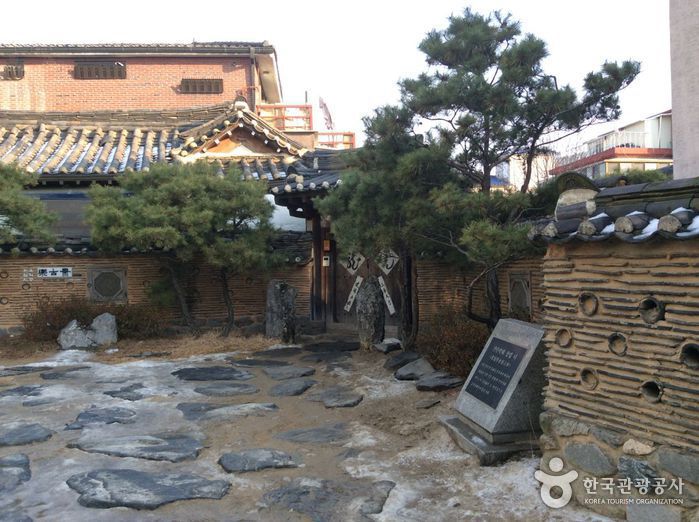
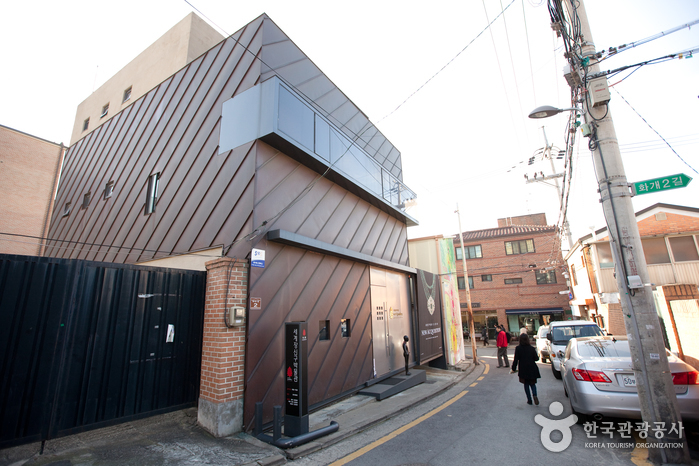
![The Place Seoul (traditional Korean-style guesthouse) [Korea Quality] / 멀티스페이스 곳 [한국관광 품질인증]](http://tong.visitkorea.or.kr/cms/resource/68/2631068_image2_1.jpg)
![Rakkojae Seoul Bukchon Hanok Hotel [Korea Qaulity] / 락고재 서울 북촌 한옥호텔 [한국관광 품질인증/Korea Quality]](http://tong.visitkorea.or.kr/cms/resource/40/2698240_image2_1.jpg)
![Seochon Guest House [Korea Quality] / 서촌 게스트하우스 [한국관광 품질인증]](http://tong.visitkorea.or.kr/cms/resource/41/2447241_image2_1.jpg)
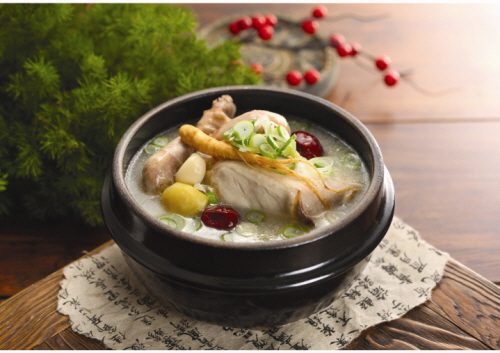
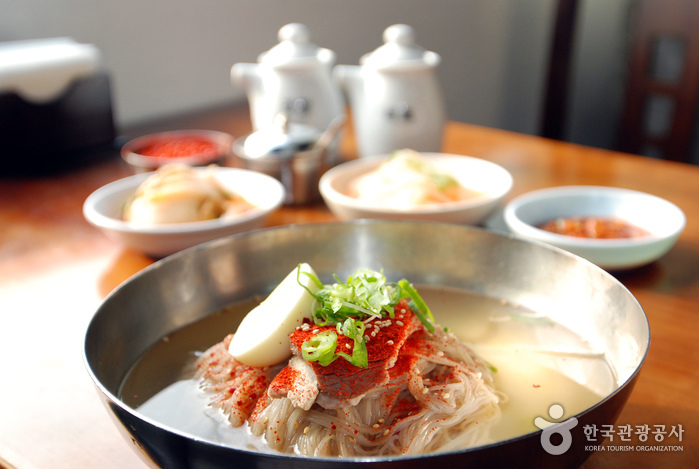
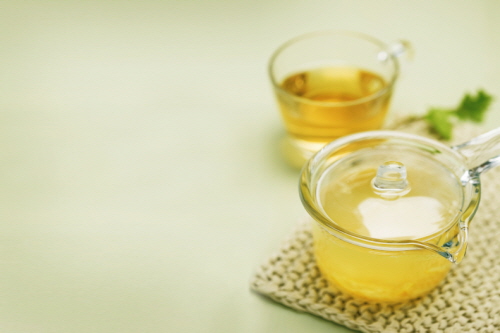
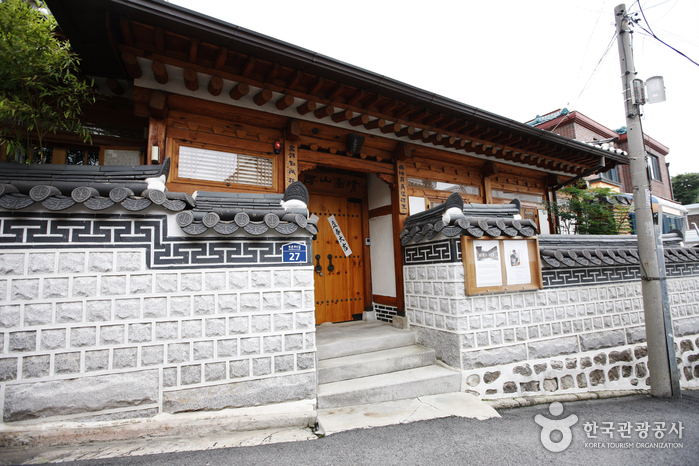

 Français
Français
 한국어
한국어 English
English 日本語
日本語 中文(简体)
中文(简体) Deutsch
Deutsch Español
Español Русский
Русский